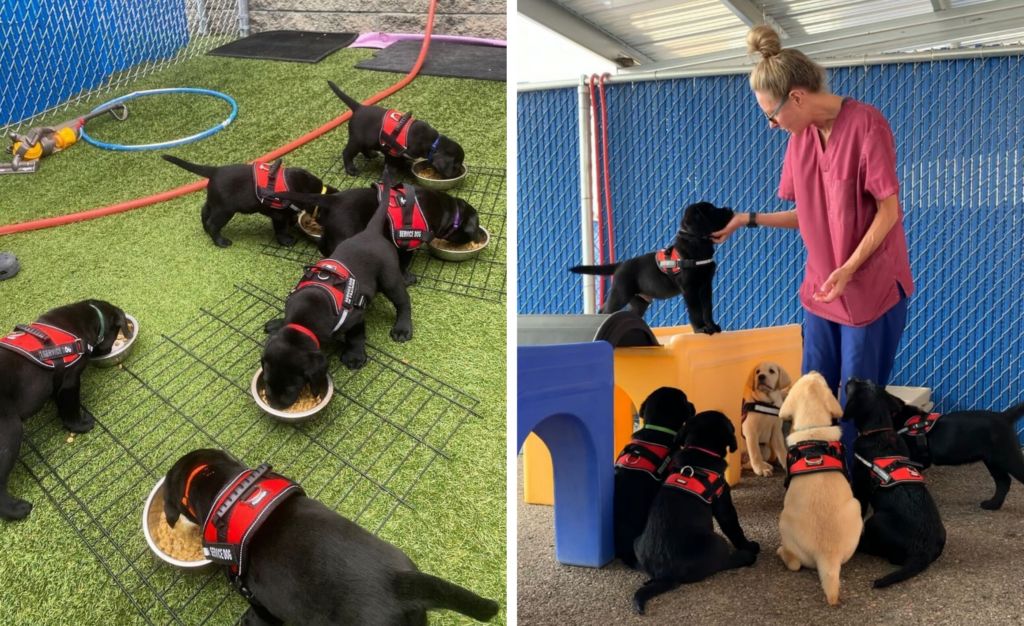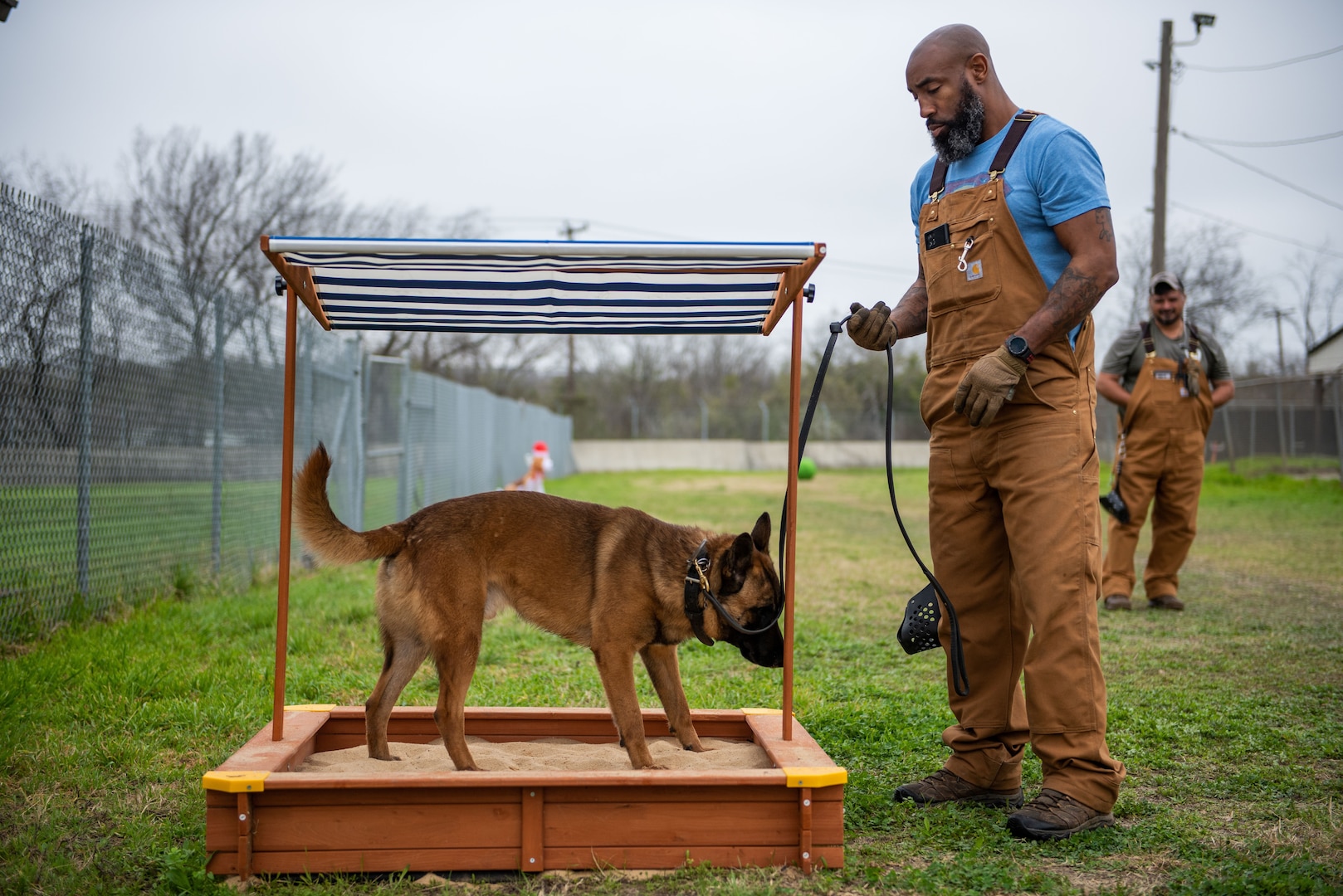Effective Puppy Training to Help Your Pet Grow into a Well-Behaved Adult Dog
Effective Puppy Training to Help Your Pet Grow into a Well-Behaved Adult Dog
Blog Article
Beginner's Guide to Successful Dog Training in your home
Efficiently training a dog at home requires a nuanced understanding of canine behavior and effective interaction methods. Establishing clear training goals, making use of high-quality rewards, and keeping uniformity across family participants are important elements. Integrating training right into day-to-day regimens can improve both involvement and retention.
Understanding Pet Behavior
Understanding pet dog actions is vital for reliable training and promoting an unified relationship between human beings and their canine friends - Puppy Training. Dogs communicate largely through body language, vocalizations, and faces, making it critical for owners to interpret these signals accurately. Acknowledging habits such as tail wagging, growling, or trembling can give insights right into a pet's emotion and purposes
Moreover, recognizing the natural instincts of pet dogs, such as their pack mentality, assists proprietors establish management functions within the home. This is important for developing a structured atmosphere where pets feel safe and are a lot more receptive to training. Pets are also influenced by their socializing experiences; early exposure to numerous environments, individuals, and various other pets can substantially shape their behavior later in life.
Common behavior problems, such as aggression, anxiety, or too much barking, typically originate from misconceptions or unmet demands. Observing and addressing these problems quickly can stop rise and make sure a positive training experience. By fostering a deep understanding of dog behavior, owners can tailor their training techniques to match their canine friends, inevitably resulting in a pleased and mannerly pet dog.

Essential Training Devices
A fully equipped training area can considerably boost the effectiveness of pet dog training in your home. Important training devices make certain that both the trainer and the pet can participate in efficient sessions that cultivate discovering and bonding.

Investing in a durable leash and a comfortable, well-fitting collar or harness is crucial for safety and security and control. These devices aid develop limits and make sure the dog continues to be safe and secure during training. Additionally, a marked training area, totally free from interruptions, help focus for both the pet and the instructor.
Educating help such as training pads, cones, or agility equipment can additionally improve the experience by introducing selection and obstacles. Having a notebook or electronic application for tracking progress can be invaluable, enabling you to keep in mind successes and areas for enhancement. Utilizing these crucial tools will develop a positive training atmosphere and lay the structure for efficient discovering.
Creating an Educating Routine
Developing a consistent training regimen is essential for reliable pet dog training in the house. A well-structured routine not just helps in enhancing preferred actions however likewise provides your dog with a complacency Go Here and predictability. To create a reliable training routine, begin by recognizing details training goals, such as fundamental commands, leash strolling, or housebreaking.
Pick a designated time every day for training sessions, preferably when your canine is responsive and sharp. Procedure ought to be short, around 5 to 15 mins, to keep emphasis and protect against exhaustion. Consistency in timing and setting will certainly boost your pet's discovering experience.
Integrate training right into day-to-day tasks to reinforce skills. For instance, method commands throughout walks or nourishment, which incorporates learning into natural routines. In addition, remain versatile and change the routine as required, suiting your pet's power degrees and state of mind.
Positive Reinforcement Methods

When executing favorable reinforcement, it is vital to pick rewards that are inspiring for your pet. High-value treats, such as tiny pieces of poultry or cheese, can be especially effective throughout training sessions. Additionally, varying the incentives can maintain your canine's interest and excitement.
Begin with basic commands, like "rest" or "stay," and slowly progress to much more complex tasks. Uniformity is key; make certain that all relative use the same commands and benefit systems to stay clear of confusion.
Additionally, it is vital to continue to be individual and prevent irritation. Pets, like humans, discover at their own rate. By promoting a supportive training atmosphere via positive support, you can enhance your pet's knowing experience while enhancing the bond in between you and your fuzzy buddy, laying the foundation for successful training end results.
Typical Training Obstacles
While training a dog at home can be a rewarding experience, it usually features a set of usual difficulties that can evaluate both perseverance and uniformity. One common issue is interruption. Pet dogs might come to be conveniently sidetracked by sounds, movements, or also fragrances in their atmosphere, making it difficult to maintain their focus throughout training sessions.
One more obstacle is inconsistency in commands and reinforcement. It can perplex the canine and prevent progression if household participants make use of different cues or benefits. Establishing a unified method is necessary for reliable communication.
In addition, pet dogs can experience stress or tension, particularly if they do not recognize what is expected of them. This can cause undesirable actions, such as barking or chewing.
Ultimately, the timing of reinforcement is critical. Delayed incentives can reduce the effectiveness of favorable reinforcement, as pets might stop working to link the actions with the benefit.
Overcoming these difficulties requires commitment, clear interaction, and a structured training strategy - Puppy Training. Identifying and attending to these typical barriers will certainly pave the method for a much more successful and satisfying training experience in your home
Final Thought
Finally, effective pet dog training in your home demands a detailed understanding of canine behavior and effective interaction approaches. By developing clear training goals and using top notch treats together with favorable support, the training process ends up being extra gratifying for both the pet dog and the trainer. Persistence, versatility, and consistency are crucial components that help with understanding. Ultimately, integrating training right into everyday regimens improves the bond in between canine and owner, making the experience both efficient and have a peek here delightful.
Establishing a consistent training routine is vital for reliable pet dog training at home.Favorable support strategies are fundamental to effective pet dog training, promoting preferred actions through incentives instead than punishment. By fostering an encouraging training environment via favorable support, you can boost your canine's discovering experience while enhancing the bond in between you and your hairy buddy, laying the groundwork for effective training end results.
In conclusion, effective pet dog training at home requires a thorough understanding of canine actions and efficient communication strategies. By developing clear training objectives and utilizing high-grade treats alongside favorable reinforcement, the training process ends up being more satisfying for both the pet dog and the instructor.
Report this page